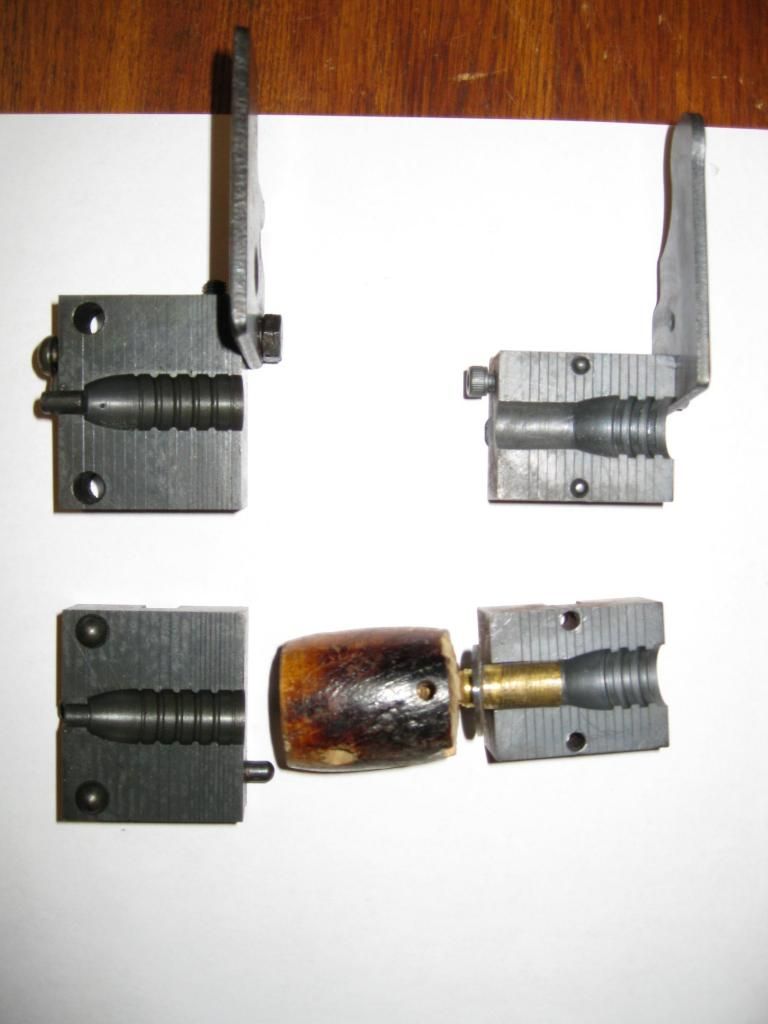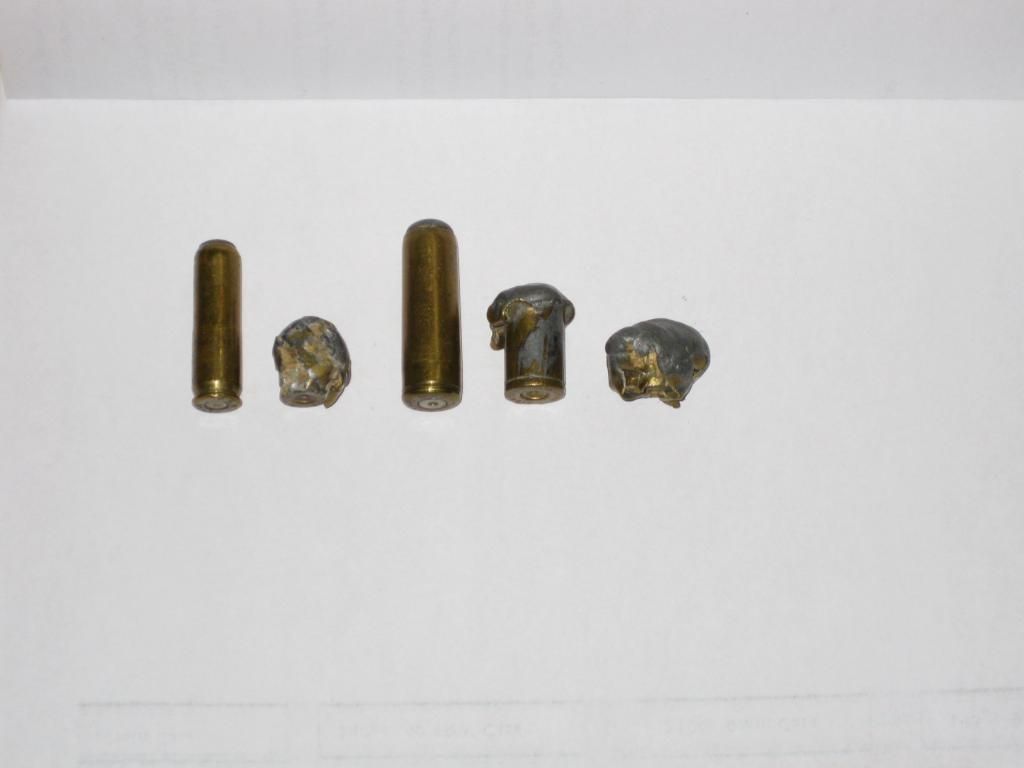| DarylS |
| (.700 member) |
| 30/03/14 05:22 AM |

|
|
|
Here's something else that works:
The left mould is the RCBS mould converted to a HP, then back to flat nose. I also turned out the gas check rebate for a flat base. The nose plug can be removed and a pin with knob used for HP cast bullets, again.
The right mould was a 450gr. Lyman (casting 473gr.) original-type .50/70 mould. It was just a bit long for the 42" twist, so I shortened it using a HP-type plunger to cast a 420gr. bullet. At .720" length, it worked fine int he Sharps 50-70 barrel's 42" twist.

Some bullets made from ctg. brass.
.375's from shortened .223 - at 350gr. The expanded bullet went through close to 3' of aspen lengthwise. I've lost the 200gr. .358" bullets made for my .358 Norma Mag that made close to 2' in the aspen. The first foot of 7" aspen round hit, split into 2 pieces when with the 200gr. .358.
480gr. .457's from rim-turned .303 as well as shortened and sized down .30/06 brass. The heavily expanded bullet from an '06 case had a pure lead core. The longer expanded bullet was from .303 brass and was cast with a WW core. It made another 4" of penetration in the -40F frozen green fir railway bed tie, even though it hit 2 large knots that were like glass. The large expanded bullet had a rope of end fibre the length of the penetration wound up in front of it, pushing tie wood ahead in an enlarging, permanent wound channel. I was amazed as seeing this, grabbing the end of the fibers with a pair pliers, unwinding and straightening them out right back within 3/8" of the surface where the bullet first hit. The wound channel stopped with the bullet having a 1 1/2" diameter hole in front of it made by the pushed wood fibers. Tough stuff. IIRC, the bullet lost less than 50gr. The hard core bullet lost about the same but with a smaller wound channel. Impact velocity was 2,040fps.
